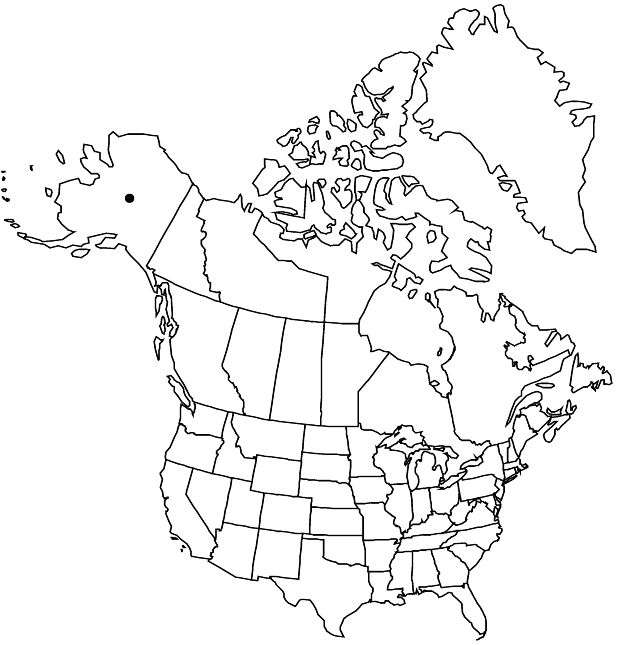Difference between revisions of "Primula anvilensis"
Syst. Bot. 12: 10, fig. 1. 1987 ,.
FNA>Volume Importer |
FNA>Volume Importer |
(No difference)
| |
Revision as of 20:29, 24 September 2019
Plants 2–12.5 cm, herbaceous; rhizomes thin, relatively short; rosettes not clumped; vegetative parts efarinose. Leaves not aromatic, indistinctly petiolate; petiole narrowly winged; blade without deep reticulate veins abaxially, narrowly cuneate or spatulate, 0.5–2 × 0.2–0.4 cm, thin, margins denticulate or with slightly rounded, widely spaced teeth, apex obtuse, surfaces glabrous. Inflorescences 1–7-flowered; involucral bracts plane, ± equal. Pedicels arching at anthesis, capillary, 5–10 mm, length 2+ times bracts, flexuous. Flowers heterostylous; calyx green or with purple stripes, campanulate, 2–4 mm; corolla white, tube 2–4 mm, length 1 times calyx, eglandular, limb 5–8 mm diam., lobes 2.5–4 mm, apex emarginate. Capsules narrowly cylindric, length 1.5–2 times calyx. Seeds without flanged edges, reticulate. 2n = 18.
Phenology: Flowering summer.
Habitat: Frost-patterned ground, late snowbeds, stream banks and gravel bars on calcareous substrates
Elevation: 0-500 m
Discussion
Primula anvilensis is known only from the Bering Strait region of Alaska: on the Seward Peninsula, in the Noatak River drainage to the north, and to the south in upland and mountainous zones near the Bering Sea. It sometimes grows with P. borealis along the Alaskan coast; it is readily distinguished by its white flowers, plane involucral bracts, and more delicate aspect.
The name Primula parvifolia sensu Fernald (not Duby) applies to this species. M. L. Fernald (1928d) based his description of P. parvifolia on material collected in the Nome area. Those plants are clearly P. anvilensis. Later, W. W. Smith and H. R. Fletcher (1943) and E. Hultén (1968) correctly included P. parvifolia as a synonym of P. borealis; they did not realize that a second, undescribed species existed along the Bering Strait.
Selected References
None.
